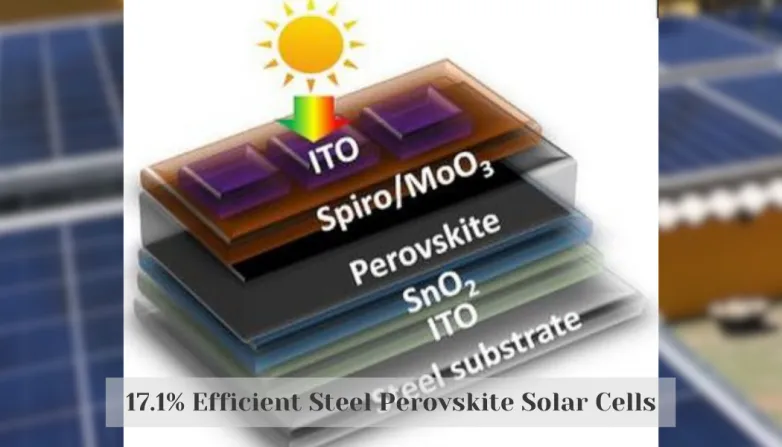17.1% Efficient Steel Perovskite Solar Cells
- Australian researchers develop record-breaking PSC on steel with 17.1% efficiency, leveraging ITO interlayer, SnO2 ETL, and OABra passivation strategy.

Researchers from four Australian universities have developed a perovskite solar cell (PSC) on steel substrate that has achieved a record efficiency of 17.1%. Steel is a desirable material for photovoltaics due to its flexibility, conductivity, thermal stability, strength, and toughness. However, it is an opaque material, which is why the team used an indium tin oxide (ITO) interlayer between the steel substrate and the cell. The cell was also equipped with a tin(IV) oxide (SnO2) electron transport layer, a Spiro-OMeTAD hole-transporting layer, a molybdenum trioxide (MoO3) buffer layer, and an ITO transparent electrode.
To further improve the performance of the cell, the researchers utilized a passivation strategy using a bromide-containing organic cation n-OABra, resulting in a new record efficiency of 17.1%. This work could be the starting point for research into using different materials as interlayers and improving refractive index matching, with the aim of boosting the performance and stability of the cells. The researchers are hopeful that their work will lead to wider applications of PSCs in the future.
What Materials Improved the Performance of the Record Efficiency Perovskite Solar Cell?
Materials that Improved the Performance of the Record Efficiency Perovskite Solar Cell:
- Indium tin oxide (ITO) interlayer
- Tin(IV) oxide (SnO2) electron transport layer
- Spiro-OMeTAD hole-transporting layer
- Molybdenum trioxide (MoO3) buffer layer
- ITO transparent electrode
- Bromide-containing organic cation n-OABra
Also read

